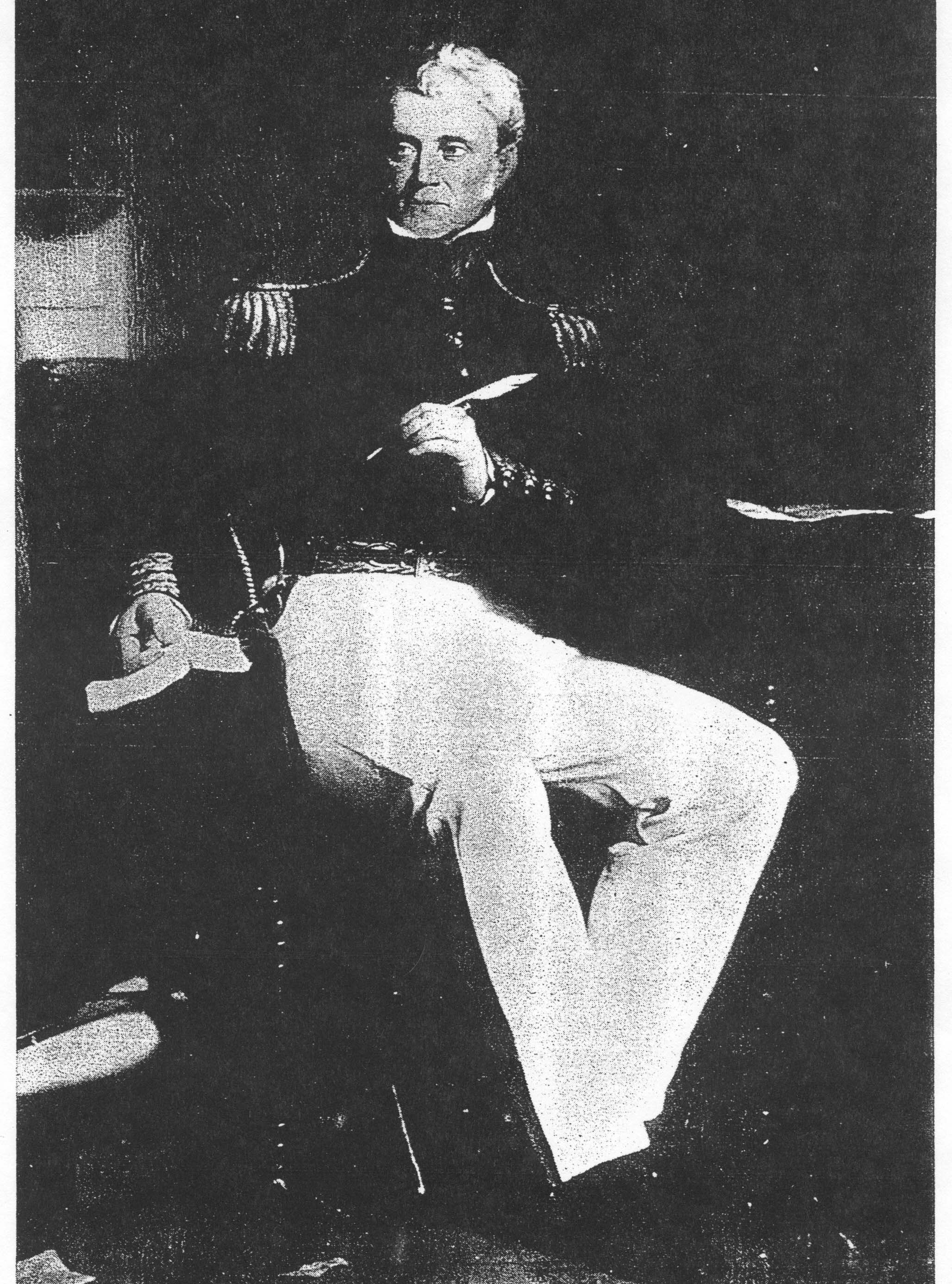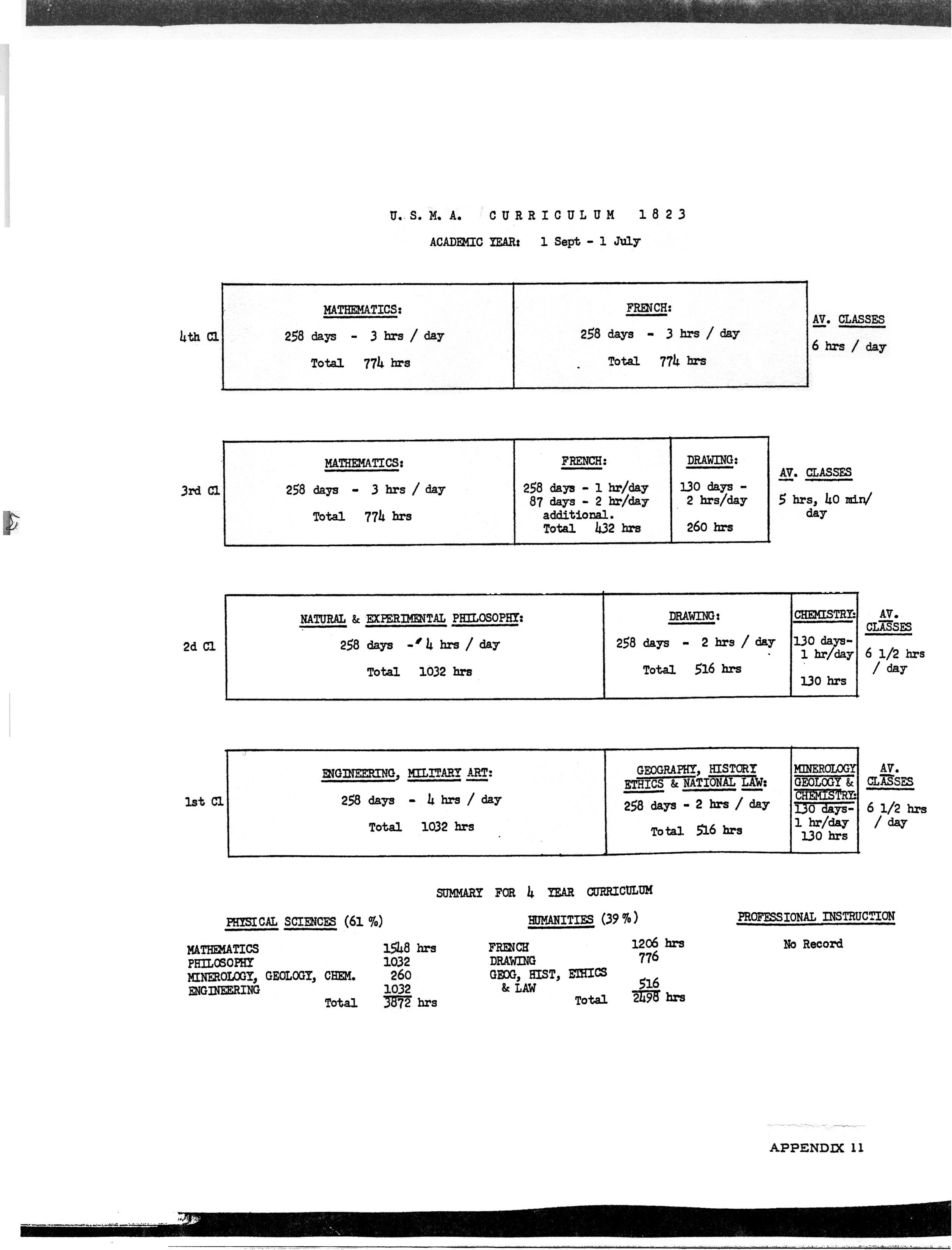- About MAA
- Membership
- MAA Publications
- Periodicals
- Blogs
- MAA Book Series
- MAA Press (an imprint of the AMS)
- MAA Notes
- MAA Reviews
- Mathematical Communication
- Information for Libraries
- Author Resources
- Advertise with MAA
- Meetings
- Competitions
- Programs
- Communities
- MAA Sections
- SIGMAA
- MAA Connect
- Students
- MAA Awards
- Awards Booklets
- Writing Awards
- Teaching Awards
- Service Awards
- Research Awards
- Lecture Awards
- Putnam Competition Individual and Team Winners
- D. E. Shaw Group AMC 8 Awards & Certificates
- Maryam Mirzakhani AMC 10 A Awards & Certificates
- Two Sigma AMC 10 B Awards & Certificates
- Jane Street AMC 12 A Awards & Certificates
- Akamai AMC 12 B Awards & Certificates
- High School Teachers
- News
You are here
Mathematics Education at West Point: The First Hundred Years - Sylvanus Thayer and the 'New' Academy
In 1815, Sylvanus Thayer (1785-1872) and William McRee were sent to Europe to study the continental military system and schools. Most of their time was spent at the École Polytechnique. Their other mission was to obtain texts. Thayer and Ray brought back over a thousand books, as well as maps and pamphlets from France. Most of these now reside in the Thayer Collection of the Academy Library. Upon returning to the States in 1817, Thayer was made the third Superintendent of the Academy. He went on to be known as the Father of the Academy for the work he did to revise and revitalize the Academy and its curriculum. However, it must be said that many of his changes were started or advocated by his predecessors. He modeled many of his changes, both academic and military, on the École. Through the remainder of the nineteenth century, the Academy had strong ties to the École Polytechnique and St. Cyr, which was founded just a few months after the USMA.

At this time, the entrance age was 14-18 years, and the only entrance requirements were that the cadets be “well versed in Reading, Writing, English Grammar and common Arithmetick, including Vulgar and Decimal Fractions and the extraction of square and Cube Roots.”[1] Though the entrance requirements would change only slowly, when Thayer became Superintendent, the methods of instruction changed quickly. Unlike his predecessors, he did not hold the title of Chief of Engineers, so could devote all of his time and creative energies to getting the fledgling Academy on a solid academic track. He established the Board of Visitors and the Academic Board, which consisted of the Superintendent, the Commandant of Cadets, and the heads of the academic departments. He also developed strict teaching and living procedures for the Academy.
By 1818, each West Point cadet was taking the equivalent of one hundred credit hours of mathematics.[2] The General Regulations and Orders for the Army [3] for 1821 specified that cadets were to study mathematics from sunrise to 7 a.m., attend mathematics class from 8 to 11, study from 11 to noon, and again from one-half hour past sunset to 9:30 p.m., six days a week.[4]
Thayer imposed a precise system for grading cadets’ daily recitations in the classroom, requiring each instructor to submit a weekly compilation of these marks to the superintendent. This not only kept Thayer abreast of the progress of every cadet, it also enabled him to implement another reform: assigning students to sections according to demonstrated competence.[5]
The 1821 Board of Visitors report indicates that “Hutton and Simpson’s Algebra” were being used with the fourth class cadets or freshmen, although the third and fourth section, the lower sections, only used Hutton.[6] This brings up another facet of education at West Point. Cadets were sectioned by their order of merit or class rank. This idea of ranking the students Thayer brought back from the École. Cadets were graded in every subject every day. Periodically, weekly to monthly, they were resectioned so that the first section had the top ten or so students, the next section had the next highest students, and so on. This system placed students in sections suitable to their ability. Upper and lower sections covered different portions of the book, and at times even used different books. For example, in 1825 there were three sections of mathematics for the second year students. The first or upper section studied calculus out of Lecroix, the second section studied out of Bourharle, and the third or lowest section still used Hutton.
Thayer organized a curriculum “which he deemed most fitted for an American military education,” a curriculum whose foundation rested on mathematics.

“His guiding principle was thoroughness in everything — thorough teaching — thorough learning.” The professors lectured to the whole class and then the cadets were split into “sections of over twenty cadets each” where they asked questions and recited for the rest of the morning. Three hours a day, six days a week, 43 weeks per year was devoted to mathematics in the classroom. Of course the cadets were expected to study the book — they practically memorized it — but they were lectured to on the material before they were asked to recite.[7]
By the end of the century, mathematics was still allocated three hours per day, however, small sections of up to 15 students met with an instructor form 8:00 to 9:30 or 9:30 to 11:00 for lecture and recitation. The remainder of the time was for individual study. The professor was in charge of one section, and observed the other sections while instructors taught two sections.[8]
Photo of Recitation (c. 1900)
[1]1819 Annual Reports of the Board of Visitors to the Untied States Military Academy, Superintendent’s Annual Report, 1896.
[2]Chris Arney, 200 Years of West Point Mathematics: Profiles of Mathematical Soldiers and Trailblazers, AMS Eastern Section Meeting, Boston MA, October 5, 2002.
[3]Quoted on p. 44 of the Annual Report of the Superintendent of the United States Military Academy for 1896.
[4]Over the years, as the curriculum has expanded, these numbers have been reduced. Not until 2003 did Saturday classes end entirely. Currently all Cadets take a minimum of four semesters of mathematics totaling 17 credits.
[5]James L. Morrison, Jr., The Best School in the World: West Point, 1833-1866, The Kent States University Press, 1998, p. 4.
[6]Annual Report of the Board of Visitors to the United States Military Academy made to Congress and the Secretary of War for the Year 1821, p. 58.
[7]Albert E. Church, Personal Reminiscences of the Military Academy, from 1824 to 1878, West Point, 1879, p. 45. Available on the United States Military Academy Library web: http://usmalibrary.usma.edu/. This description of teaching methods essentially agrees with one given by Thayer in a letter to President Monroe, October 10, 1828. The West Point Thayer Papers 1808-1872, edited by Cindy Adams, 1965. Available on the USMA Library web.
[8]Annual Report of the Superintendent, 1896. p. 58.
Editor's note: This article was published in May of 2008.
V. Frederick Rickey and Amy Shell-Gellasch, "Mathematics Education at West Point: The First Hundred Years - Sylvanus Thayer and the 'New' Academy," Convergence (July 2010)





